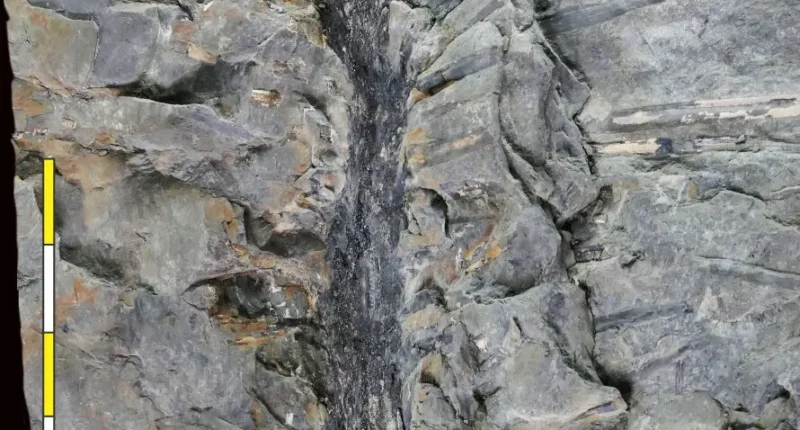In the ancient prehistory of Earth, there is a chapter that waits to be told known as Romer’s gap. Researchers have identified a hiatus in the tetrapod fossil record between 360 million and 345 million years ago, after fish had begun to adapt to land and more than 80 million years before the first dinosaurs.
While mysteries remain about evolution’s experiments with living things during that 15-million-year gap, a fossilized tree described in a new paper offers greater insights to some of what was happening during this period in nature’s laboratory.
Named Sanfordiacaulis densifolia, the tree had a six-inch diameter with a nearly 10-foot-tall trunk composed not of wood, but of vascular plant material, like ferns. Its crown had more than 200 finely striated, compound leaves emanating from spiral-patterned branches that radiated 2½ feet outward. Robert Gastaldo, a geology professor at Colby College in Maine who is an author of the study, which was published Friday in the journal Current Biology, compared it to “an upside-down toilet brush.” Comically top-heavy, even Seussian, the tree most likely remained upright by intertwining its branches with those of neighboring trees.
“This is a totally new and different kind of plant” than had been found in the Late Paleozoic Era, said Patricia Gensel, a professor of biology at the University of North Carolina at Chapel Hill and another author of the paper. She added, “We typically get bits and pieces of plants, or mineralized tree trunks, from Romer’s Gap. We don’t have many whole plants we can reconstruct. This one we can.”

The tree was unearthed near Valley Waters, New Brunswick, in an active private quarry within Canada’s Stonehammer UNESCO Global Geopark. (A new fossil museum will open in the village later this year.) The area is part of the 350-million-year-old Albert Formation, a geological layer that has also yielded fossilized fish and trace fossils. Although partial fossils of the same tree species had previously been found, the new discovery represents the only such fossil whose trunk and crown were preserved together.
“It’s very rare to find something this well preserved and unique,” said Matt Stimson, an author of the study who works at the New Brunswick Museum and who first excavated S. densifolia with another study author, Olivia King of Saint Mary’s University. “It’s like finding a cactus in the middle of a Canadian boreal forest.”
Trees with spongy, vascular-tissue trunks first appeared 393 million to 383 million years ago. Their woody counterparts entered the fossil record about 10 million years later. Trunks and stumps make up the bulk of arboreal fossils from 398 million years to 327 millions years ago, and have been found only in coastal wetland areas.

The quarry in Valley Waters was once a swampy, tropical ecosystem surrounding a rift lake, a deep water body running atop a fault zone. Its sediments were similar to those of modern-day Lake Victoria and Lake Tanganyika in East Africa. The bank containing the tree was sloughed off during a catastrophic earthquake, depositing the tree on its side at the bottom of the lake. Ensuing mudslides quickly buried the vegetation and snuffed out aquatic life. Sediments filled in around the leaves, three-dimensionally preserving the specimen, which falls somewhere on the evolutionary continuum between a woody tree and an enormous plant.
S. densifolia evolved during a time when the tiered forest-canopy structure was still developing, and plants were diversifying, Ms. King said. It probably lived below the tallest trees, such as the 100-plus-foot, scaly barked Lepidodendron, but above low-growing lycopods and mosses.
“The architecture of this tree suggests it was growing into this ecological niche of being in the mid canopy, trying to capture as much sunlight as possible with branches that extended out almost as long as the tree was tall,” Ms. King said.
“It’s an experiment in plant biology that was successful for some point in time, and then was not,” Dr. Gastaldo said. “We don’t see anything that looks like this in any of the forests we’ve been able to evaluate since then.”






